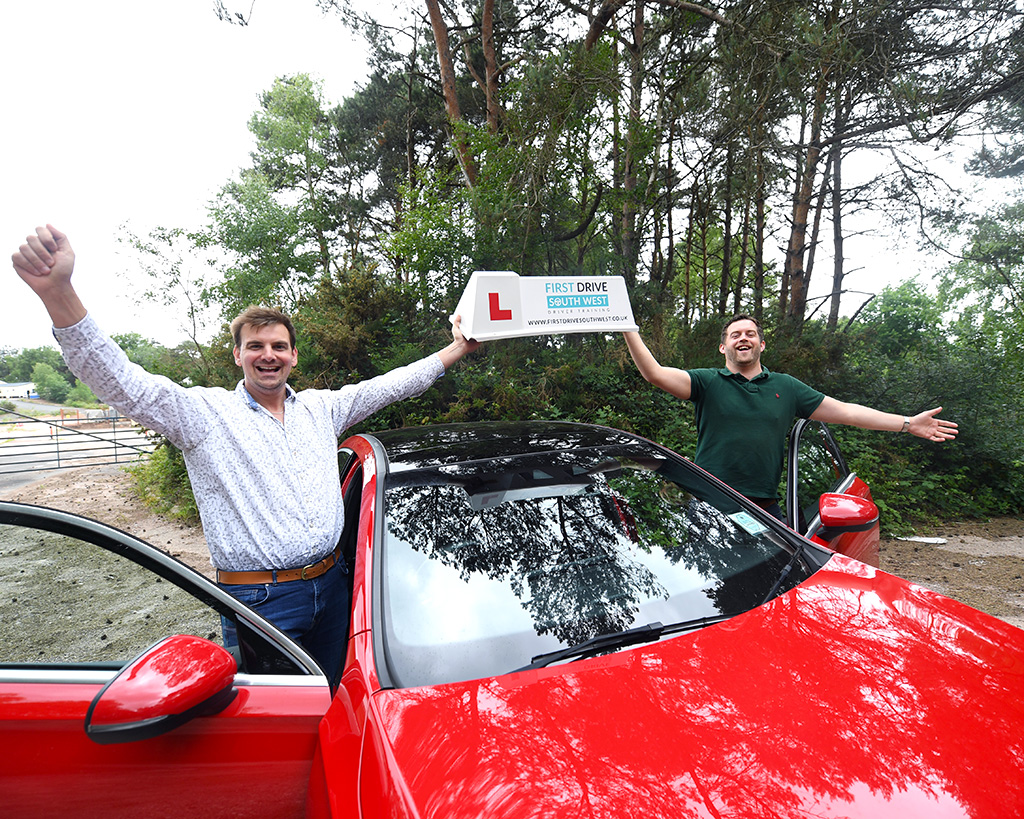To PDI or not to PDI. That’s the question – and it’s a tricky one.
Why not let our experts compare the pros and cons of applying for your Trainee Licence, so you don’t have to.
 On your way to becoming a fully-fledged Driving Instructor? Confused about whether or not to apply for the PDI licence? You’ve come to the right place. In this post, we’ll weigh up the benefits and pitfalls of the trainee licence, to help you on the road to your new career – feeling fully-informed, and confident you’ve made the right choice.
On your way to becoming a fully-fledged Driving Instructor? Confused about whether or not to apply for the PDI licence? You’ve come to the right place. In this post, we’ll weigh up the benefits and pitfalls of the trainee licence, to help you on the road to your new career – feeling fully-informed, and confident you’ve made the right choice.
How do you know when it’s time to apply?
Well, you’ll have to pass Parts 1 and 2 of your Driving Instructor assessment first. The good news? You’ll only have one more hurdle to jump, and that’s Part 3, which assesses your teaching abilities out on the road.
Once you hit this stage of your learning, you’ve got a big decision to make – whether or not to apply for your trainee licence, otherwise known as your PDI Badge.
Believe it or not, this pink triangle holds a lot of power. It can affect your ability to start earning, gain teaching experience, and choose where you work in the future, so it’s not a decision you should take lightly.
Luckily, our First Drive South West experts are here to help. So, keep reading to find out if a PDI Badge is really right for you, or you’d be better off not taking the plunge.
Discover more about the requirements for the Part 3 test in our blog post – How to become a driving instructor.
Do I have to Apply for a Trainee Licence?
The simple answer is no. It’s not a legal requirement. So, before we dive into the potential advantages and drawbacks of being PDI certified, let’s weigh up the good and the bad of being badge-less during your Part 3 training.
Pros of Not Applying for Your PDI Badge:
- No Minimum Training Hours
- Confident you’ll pass Part 3 with flying colours?
Not having a PDI Badge means you can cut down on your training, as there’s no minimum requirement to fulfil before you take your Part 3 Test. And, if your first or second attempts aren’t successful, you still don’t need to meet a training quota for retakes. - It could be Cheaper Overall
- The potential for reduced training hours brings us nicely onto our second benefit – cost.
- Fewer training hours means your course could end up a lot cheaper without your PDI Badge.
You’ll need to tot up 40 hours before you can even apply for a trainee licence, and another 20 hours once you’ve received it. So, it’s no wonder the PDI Badge is often the biggest financial outlay of any driver training programme. - You’re Not Tied to One Training Company
- Unlike the trainee licence, you don’t necessarily need a sponsor for your studies.
This means you’ll have greater flexibility within your course to explore driver training options, and you’ll be able to train with instructors from different businesses. - There’s No Timeline
- While a PDI badge cuts your training window short, you’ll still have two years from the date you passed your theory test to master Part 3.
So, if you’re someone who prefers the freedom and reassurance a little extra study time can offer, this could be the option for you.
Cons of Not Applying for Your PDI Badge
- You Can’t Earn while You Train
- Brace yourselves, because this is a big one.
It’s actually illegal for you to charge your learner drivers money, without a trainee licence. So, while not having minimum training hours can help keep costs manageable, you won’t be able to offset the money you spend on your course with your earnings. - You’ll have to Source Your Own Students
- Unfortunately, without a trainee licence, your learners aren’t provided for you – and neither are your training vehicles.
You’d need to find your own students who are happy to train in either their own cars, or in yours – with the appropriate insurance, of course.
Now when times are tough financially, the prospect of a cheaper course does sound hugely appealing. And we get that. However, an important factor to consider is the national pass rate for Part 3, which is a jaw-droppingly low 35% – and you only have 3 chances to get it right. So, the question you really need to ask yourself is, will training for Part 3 without a PDI Badge help me feel as prepared as possible?
If you’ve weighed up the options and you’re sensing this might not be the way to go, it could be time to consider the trainee licence as a serious alternative. So, let’s take a closer look at the opportunities and obstacles that are part and parcel of getting your badge. But first, you’ll need to know more about getting your hands on one.
How do I get my Driving Instructor Trainee Licence?
 How do I get my instructor trainee licence? Well, to be eligible for a trainee licence, you’ll need to have passed the Part 2 ADI test, and complete a minimum of 40 hours of training towards Part 3. And, once you’ve completed your training hours, prepare for some serious paperwork. You’ll need to send the DVSA your ADI 21T form – the declaration of your completed training – as well as the ADI 3L form from your fully qualified ADI sponsor. It costs £150 to apply, and you can specify on the form when you’d like your licence to start.
How do I get my instructor trainee licence? Well, to be eligible for a trainee licence, you’ll need to have passed the Part 2 ADI test, and complete a minimum of 40 hours of training towards Part 3. And, once you’ve completed your training hours, prepare for some serious paperwork. You’ll need to send the DVSA your ADI 21T form – the declaration of your completed training – as well as the ADI 3L form from your fully qualified ADI sponsor. It costs £150 to apply, and you can specify on the form when you’d like your licence to start.
Ready to sign up?
You can find these forms here on the gov.uk website.
Need a little more persuasion? Dive into our Pros and Cons.
Pros of Applying for your PDI Badge
- You can Start Earning Money
- With a trainee licence, you’re allowed to start charging money for your lessons.
This helps to offset the cost of training and can help smooth the transition to becoming a fully-qualified driving instructor. - You’ll Gain Valuable Experience
- If you have a PDI Badge, you won’t need to source your own students, and you’ll get to train a variety of people, each with their own learning goals and needs.
This means it’s not only an organisational time-saver, it’s an experience booster too. And, when it comes to the exam crunch, it’ll really help you decide who to take the Part 3 Driving Instructor Test with, as well as what subject to cover. - You could Get a Foot in the Door
- There are plenty of sponsors out there with already established businesses for you to join.
Choosing a sponsor from a well-known, respected company could benefit you in the long-run. You might even get the opportunity to transition from trainee to trainer with the support of a franchise behind you, and have something juicy to add to your CV, too. - You’ll Benefit from Top Training
- Going from training with your instructor to teaching students yourself can be a big step up.
But, 20 hours of compulsory training allows you to hone your practice with an expert, and fully prepare yourself for Part 3. Your driving instructor might even be able to grade your lessons according to Part 3 criteria – and we have a feeling those mock exams could come in really handy on D-Day. That’s Driving Test Day to me and you.
Cons of Applying for your PDI Badge
- It’s Expensive
- 60 hours of training doesn’t come cheap.
You’ll need 40 training hours to apply for your PDI Badge, and a further 20 hours to complete within the first 3 months of having your licence. It’s a large expense, granted. But it does bring with it the knowledge, experience and support you’ll need for success. - You’re Against the Clock
- When you pass the Part 1 theory test, you have two years from that moment to qualify. Which is great, right?
But, here’s the kicker. When your PDI badge begins, that time is then dramatically reduced to 6 months, and you’ll have to have passed your Part 3 Driving Instructor Test by then. It’s scary stuff, but, with all of your training experience, and the dedicated support of your instructor, we’ve no doubt you’ll be feeling confident and ready to pass with flying colours. - It’s Expensive.
As we mentioned earlier, 60 hours of training can be hard on the bank account. You’ll need 40 training hours to apply for your PDI Badge, and a further 20 hours to complete within the first 3 months of having your licence. There’s no doubt it’s a large expense. But it does bring with it the knowledge, experience and support you’ll need for success. - You’re Tied In Get ready to sign on the dotted line!
When you find a sponsor, they might ask you to join a franchise where they provide your car and/or students for a weekly or monthly fee. You might find some of these contracts mean you’re locked in for several years, and not just for the length of your trainee licence – which is great if you’re looking for a long-term commitment, but a major drawback if you’d rather strike out on your own. - You’re Not Allowed to Advertise.
Speaking of going solo, did you know that as a trainee you can’t advertise your own business? Your marketing magic is strictly limited to your sponsors, and you can only be assigned paying students through them. It’s probably not a deal-breaker, but it’s definitely something to consider if what really motivates you is living the solopreneur dream. - If you’ve made it to the bottom of this list, well done.
You’ve got all the info you need to come to an informed and balanced decision. The question is, have we helped you make up your mind? Whether you’ve opted to boost your earning potential with a PDI Badge, or you’d rather have the freedom and flexibility of going it alone, let us know in the comments. We’d also love to hear which pro or con was the deciding factor for you – perhaps you can inspire our First Drive South West community, and help them reach a decision, too.
Still on the fence?
Don’t worry, we’re always here for support. Get in touch with us for an informal chat about your options, by filling out the form below.